Musing: Whatever Happened to Dinosaurs?
 Saturday, September 17, 2011 at 10:33PM
Saturday, September 17, 2011 at 10:33PM 
Usually when I'm at work and there's a combination of having nothing to do and it being a slow news day I find myself browsing Reddit, a repository for most of the interesting, funny and/or attention-worthy pieces of information you can find on the internet at any given time. Reddit of course has a large gaming-related community and it is where I usually find myself when I log on there. During one especially boring day several months back I, like many other Redditors, discovered a tweet from the Twitter account of Gustav Halling, the lead gameplay designer for Battlefield 3.
Click to read the full articleReview: Warhammer 40k Space Marine
 Friday, September 9, 2011 at 3:30PM
Friday, September 9, 2011 at 3:30PM 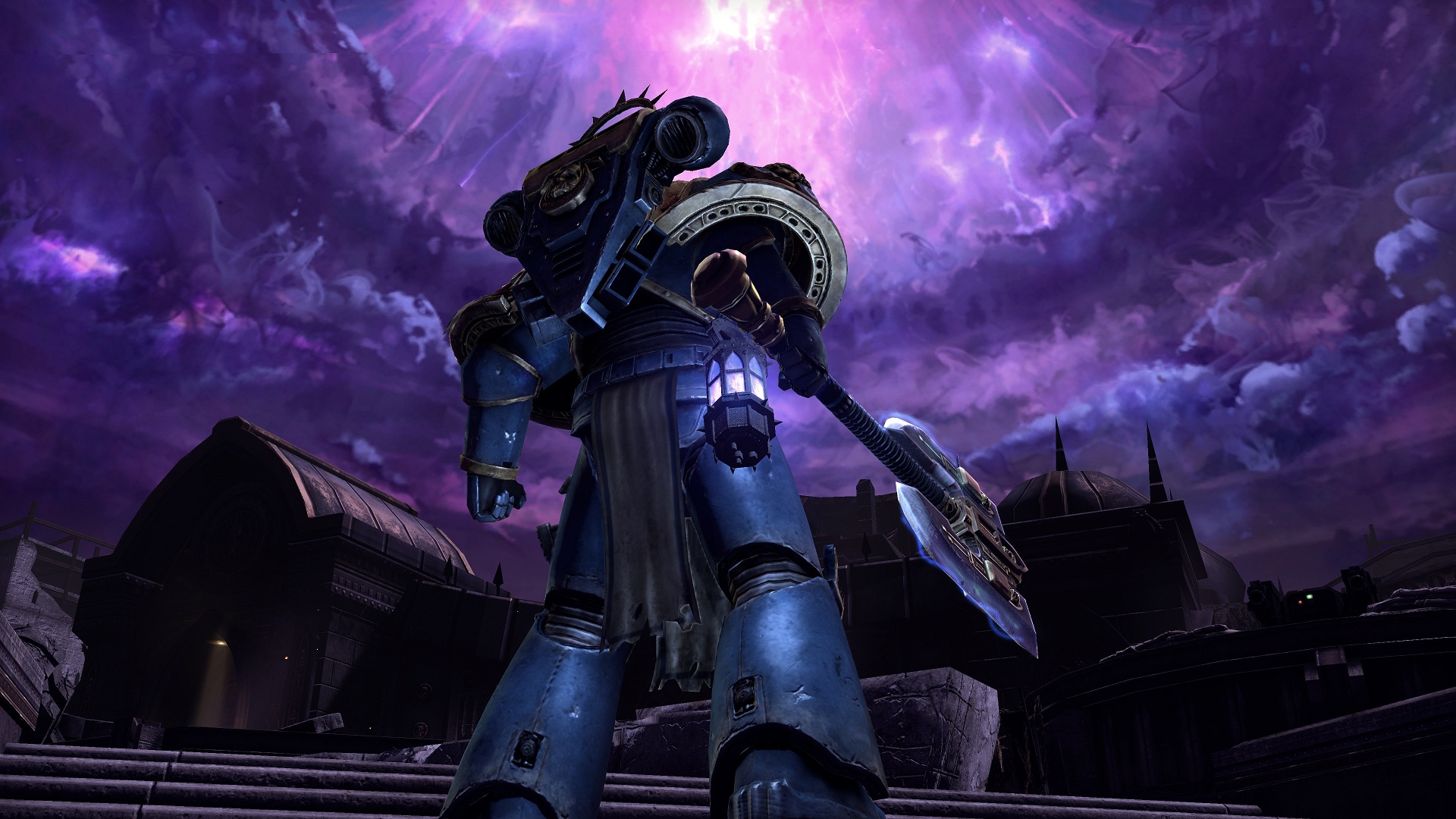
The role-playing game is probably the most well known scene in all of interactive entertainment. Long before it would ever grace a mouse and keyboard people were gathering together in their living rooms, basements, and pretty everywhere they could to realize their fantastical desires and live lives that no one could attain. Heroes, villains and legends all around fought epic battles upon the player’s infinite mental landscape where victory or death was literally a role of the dice and a mark of the pencil.
These days though gamers don’t have to rely solely on imagination in order to experience high fantasy as they can now be visualized using a television screen, a gaming console and the ambition of a cohesive development team. Warhammer 40,000 is but one of the dozens upon dozens of RPGs that were born long ago but it holds the distinction of being one of the few series ever to make a successful transition from paper to digital entertainment. Relic Entertainment succeeded in this endeavor with their 2004 title Dawn of War, an RTS title that was as fun to play as it was faithful to the canon of the Warhammer 40k universe. After releasing a series of expansions and a full-fledged sequel in 2009 Relic decided to shift gears and focus their efforts in a new direction: the third-person shooter. Warhammer 40k: Space Marine is the result of this endeavor but is it enough to stand out from the crowd of shooters that are just beginning to emerge for the fall 2011 season of gaming?
Click to read the full articleBeginning Reform is Beginning Revolution
38,000 years from now, far longer than many think our species will survive, humanity has prospered and taken to the stars, conquering countless planets and systems in the Milky Way galaxy. It is not a time of peace though: the Imperium of Man, lead by the Emperor and his Lords of Terra, find themselves locked a great war for survival against the Orks, an alien species that seeks only to pillage and plunder whatever world they come across. At the frontlines of this war, humanity’s champions, the Space Marines, have charged into battle for hundreds of years without restraint or mercy and it is their shoes we find ourselves in.
As Captain Titus of the Ultramarines, both the most honored and the founding chapter of the Space Marines, you bring your more than 150 years of combat experience to the field of battle. A distress call has brought you to a Forge World, a planet-wide weapons factory that has been invaded by an army of Orks. The secrets weapons being developed there are too crucial to the war effort to be destroyed or, worse, captured by the Orks and so Titus and his chapter have been sent as an advance force to prevent such an event from becoming reality.
Space Marines’ story is one that is told on the fly as Titus and his squadmates Sidonus and Leandros combat the hordes of Orks. Initially, Titus and crew are sent in to prevent the capture of a Titan, a mech that stands several hundred meters tall and is loaded down with as much ordinance as it can muster. Space Marine continues on long after this in a narrative that’s entertaining though not entirely unpredictable in its direction and shifts thereof.
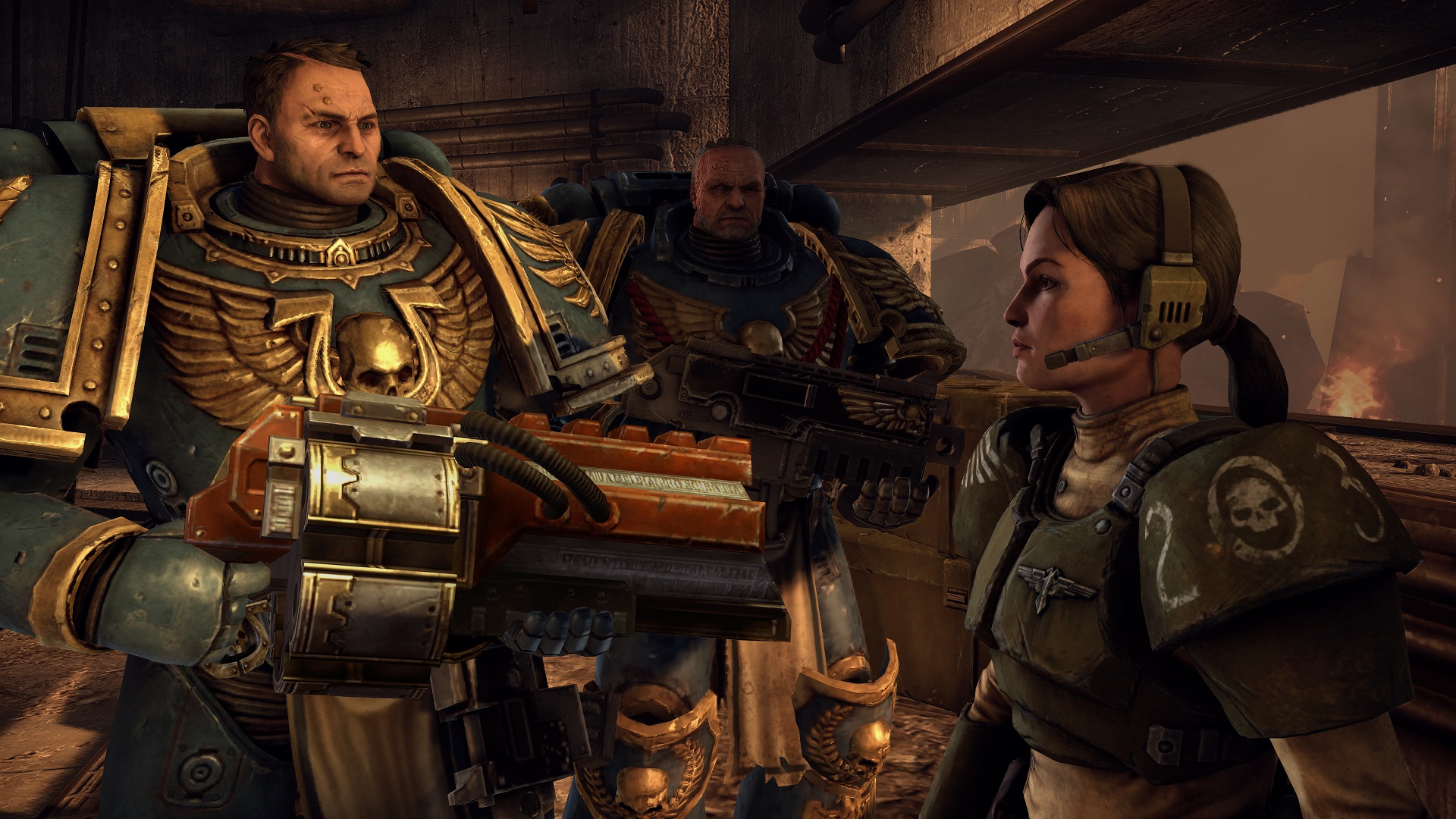
What it does do and, for that matter, does quite well is throw you headlong into the Warhammer 40k universe. High fantasy in space is something that sounds great on the board but also bears that worry of too much depth for an average fan or a newcomer to understand, let alone enjoy. Space Marine seems to take note of this and keeps the background of the 40k universe bottled up, focusing the story and most of its bits almost completely upon the situation at hand. There’s a wonderful sense of headlong theocratic devotion in the human and Ork characters that comes off so strong that, if you can suspend your disbelief as to how utterly ridiculous it is, you find yourself drawn in and almost cheering along your characters.
The singleplayer experience for Space Marine clocks in at about an 8 to 10 hours depending on your gaming abilities and while this isn’t enough alone to garner your hard-earned cash off the bat it does serve as both a great entry point for newcomers to the Warhammer 40k mythos as well as seasoned veterans. It definitely stands out in a market dominated by post-apocalyptic futures and modern combat titles so if you are looking for something fresh Space Marine is definitely worthy of your interest.
The Blood of Martyrs is the Seed of the Imperium
Gameplay in Space Marine, as said before, is a third-person shooter experience. Players face off against thousands of enemies over the course of the game usually alongside two or three AI teammates of, at times, questionable intelligence. It is clear that Relic intended for you to earn the majority of the kills throughout your time playing the game and at times it seems like your friends can stand on their own just fine. Sidonus, Leandros and your occasional forth party member are incapable of being killed and certainly do enough to make it feel like they are contributing to the war effort but, when you are staring down the sight of your weapon see over a dozen Orks charging you it’s hard to not question their devotion.
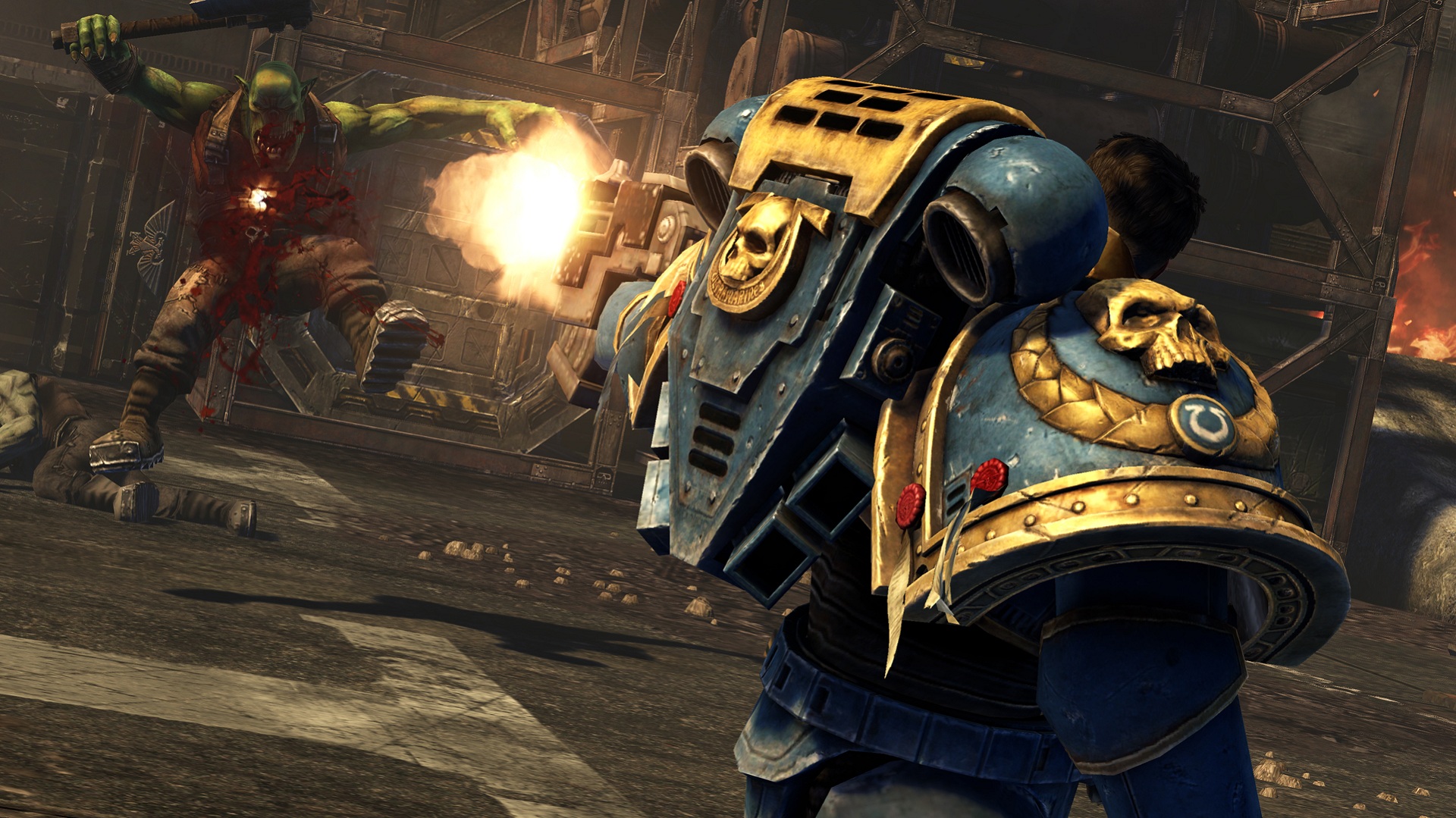
Enemies in Space Marine consist of two races, the former being the Orks while the latter being the Legions of Chaos. Regardless of their affiliation, enemies will usually come in one of three flavors: melee, ranged and a mix thereof. The mixes can only be described as micro bosses or perhaps squad commanders as they are both quite harder to kill and, more often than not, will slaughter you if you aren’t careful.
What the game doesn’t tell you though is the degree of enemy you face. Third-person shooters usually have you facing off against a handful of enemies at a time in an enclosed space. Space Marine however fully understands the meaning of the word ‘horde’ as you are regularly assaulted by no less than well over two dozen enemies at a time. Each encounter with the enemy will not feel particularly unique but, given the often large, open spaces you have to engage them in, this feeling will appear quite a few times throughout the game.
Facing down dozens of foes at a time is quite the task for any protagonist, especially one in a third-person shooter. Captain Titus though was clearly made for such a task. As a Space Marine, Titus and his men stand eight feet tall and are adorned with armor that makes each man look and feel more like a tank than a human being. This sense of overwhelming strength carries over into the game as Titus feels like the most versatile and mobile weapon on the battlefield.
This is a requirement given the game’s overall design. Staying true to its “cover is for the weak” tagline, Space Marine is half brawler, half shooter done in a way that actually mixes the two quite well. While there are select segments in the game that encourage melee over shooting or vica versa they don’t come often enough to dictate how you should play the game overall. Many have laid claim that this game is yet another Gears of War clone and they are oh so wrong.
Weapons in Space Marine not only are true to the Warhammer canon but are also feel wonderfully powerful and destructive. The first melee weapon you earn in the game is a chainSWORD and your initial pistol and rifles fire explosive rounds. The game’s most powerful melee weapon, the Thunder Hammer, limits you to using only your pistol and rifle but in return is easily the most fantastically devastating weapon I’ve wielded in years. Coupled with the game’s unfortunately occasional sequences in which you utilize a jetpack you feel damn near unstoppable. In short, you are a juggernaut in Space Marine and it feels magnificent.
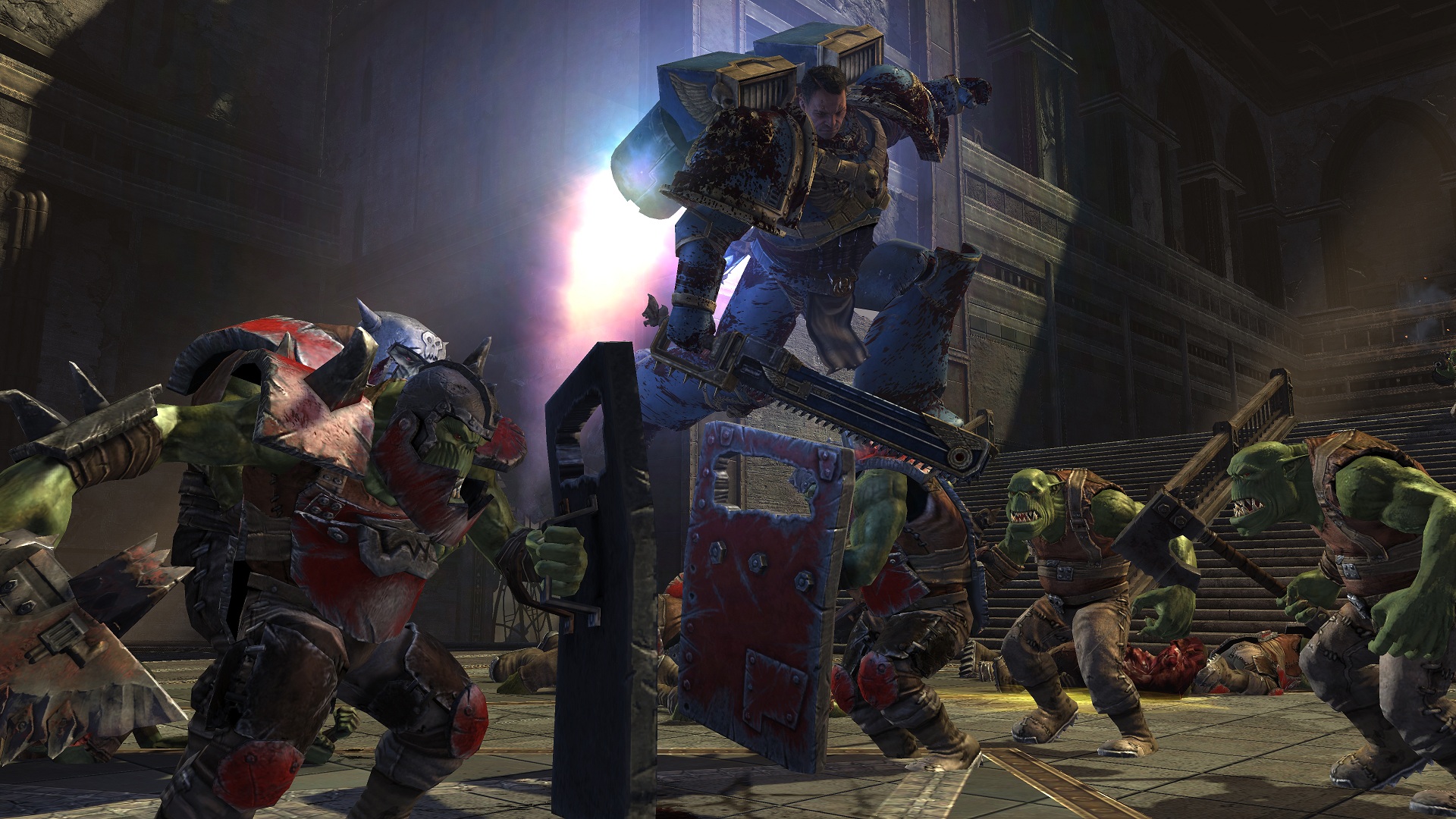
The only area you can really compare Relic’s title to that of Gears would have to be in the brutality department. The level of gore and decimation present in Space Marine is equal to if not superior to what Epic Games has been putting into their franchise and it, in turn, really compliments the overall nature of the Warhammer universe. When you aren’t getting headshots with your in-game weapons and earning some of the goriest explosions in the history of gaming you are literally smashing and slashing enemies into bits and pieces. The game’s health system requires you to stun and execute enemies in order to regain health and the resulting animations are nigh awe inspiring.
All Men Call Out for Salvation
In addition to an entertaining singleplayer experience Relic has included a surprisingly versatile multiplayer experience on the disc. A team-based affair all around, Space Marine’s multiplayer pits a team of Space Marines against their Chaotic brethren in one of two modes: Seize Control and Annihilation. Seize Control is the Warhammer equivalent of a territory control mode like Domination in the Call of Duty series while Annihilation satisfies your need for a team deathmatch variant. The lack of more modes of play is a bit disappointing considering how much variety you can get out of most multiplayer-centric titles on the market but Relic seems to want to change this in the future.
Space Marine, much like most other shooters on the market, offers a class-based experience that can be customized to the player’s preference. Only three classes are offered: Tactical/Chaos, the game’s balanced class; Assault/Raptor, the more melee-focused class that allows players to jump packs in order to get around the map fast; and Devastator/Havoc, the ranged class that equips you with heavy weapons and the ability to brace oneself in order to deliver rapid fire. All three classes are entertaining to play as but it seems that the Assault class in particular can be especially dominating in Seize Control as it is both fast and can deliver a strong ground-pound attack on enemies who aren’t too careful.
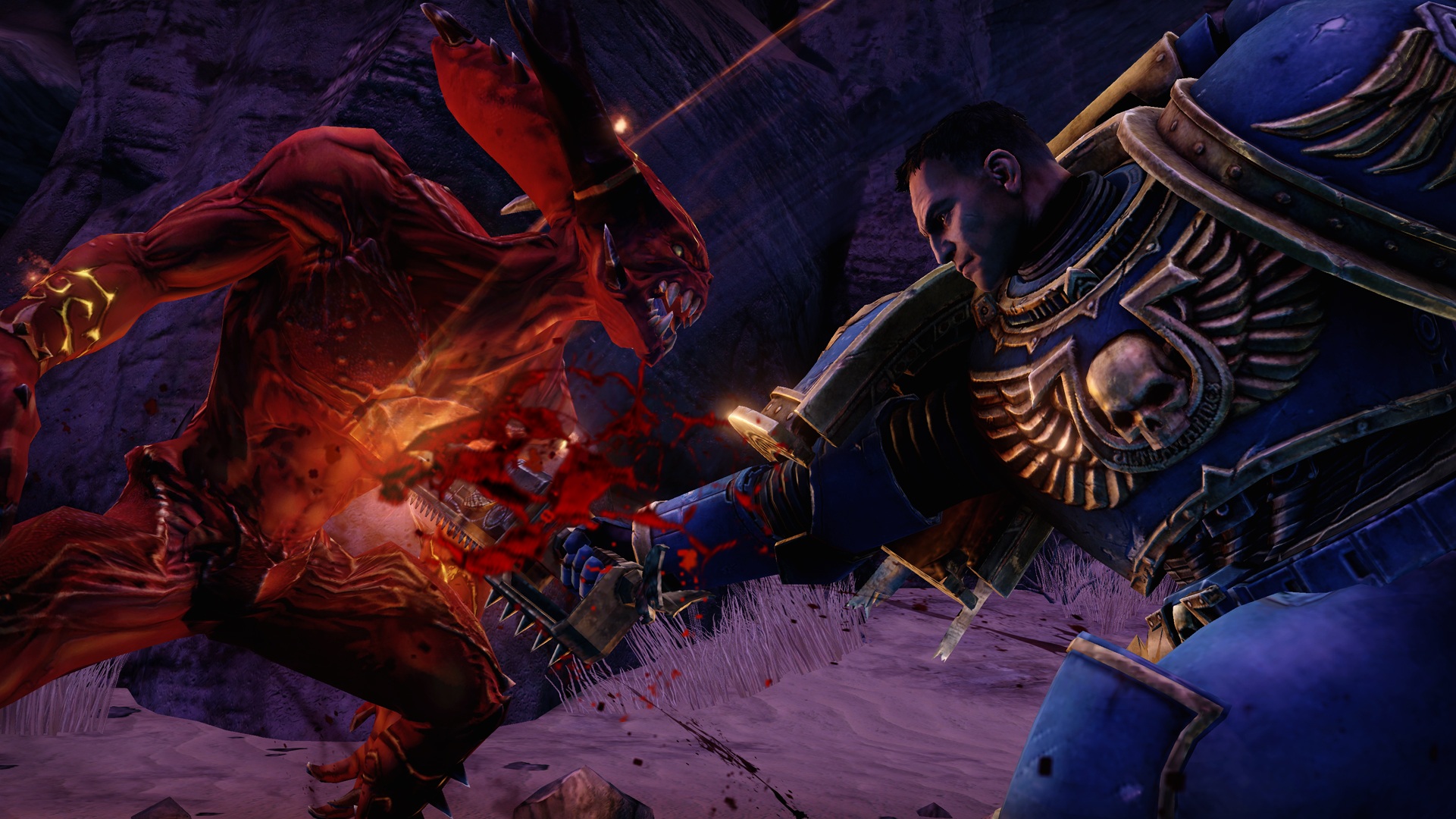
The level of customization available to the player is surprisingly strong and can easily challenge the like of games like Halo Reach. Weapons can’t be modified but the player can equip up to two perks to aid them in combat. Armor easily allows for the most customization as you can alter almost any aspect of your character’s armor to one of your liking and the default armor sets derive from almost every single Space or Chaos Marine division in the entire Warhammer universe which should easily entertain series fans.
Space Marine’s multiplayer component offers potential but given the amount of opposition it has to face on the market it doesn’t stand much of a chance in the long run of keeping your attention. Relic has announced that they will be releasing a 4-player cooperative mode for free via DLC soon but it wasn’t factored into the overall score.
Brave Are They Who Know Everything but Fear Nothing
Relic Entertainment is a company that is well versed in the Warhammer 40k universe. Just as strongly as they clearly love this dystopian, terrifyingly different reality so too do they deliver a faithful, almost loving gaming experience. Space Marine is a departure for Relic as it escapes from the god-eye perspective of their previous RTS outings and brings it down to earth for a visually devastating experience but any fears that one would have about such a transition are laid to rest in this latest effort. Space Marine definitely stands out in the crowded season this year and probably isn’t destined to do as well as it deserves but, for me, I couldn’t have picked a better title to begin the fall 2011 gaming madness.
If you don’t play Warhammer 40k: Space Marine it isn’t just dereliction of duty as a mature gamer: it’s heresy.
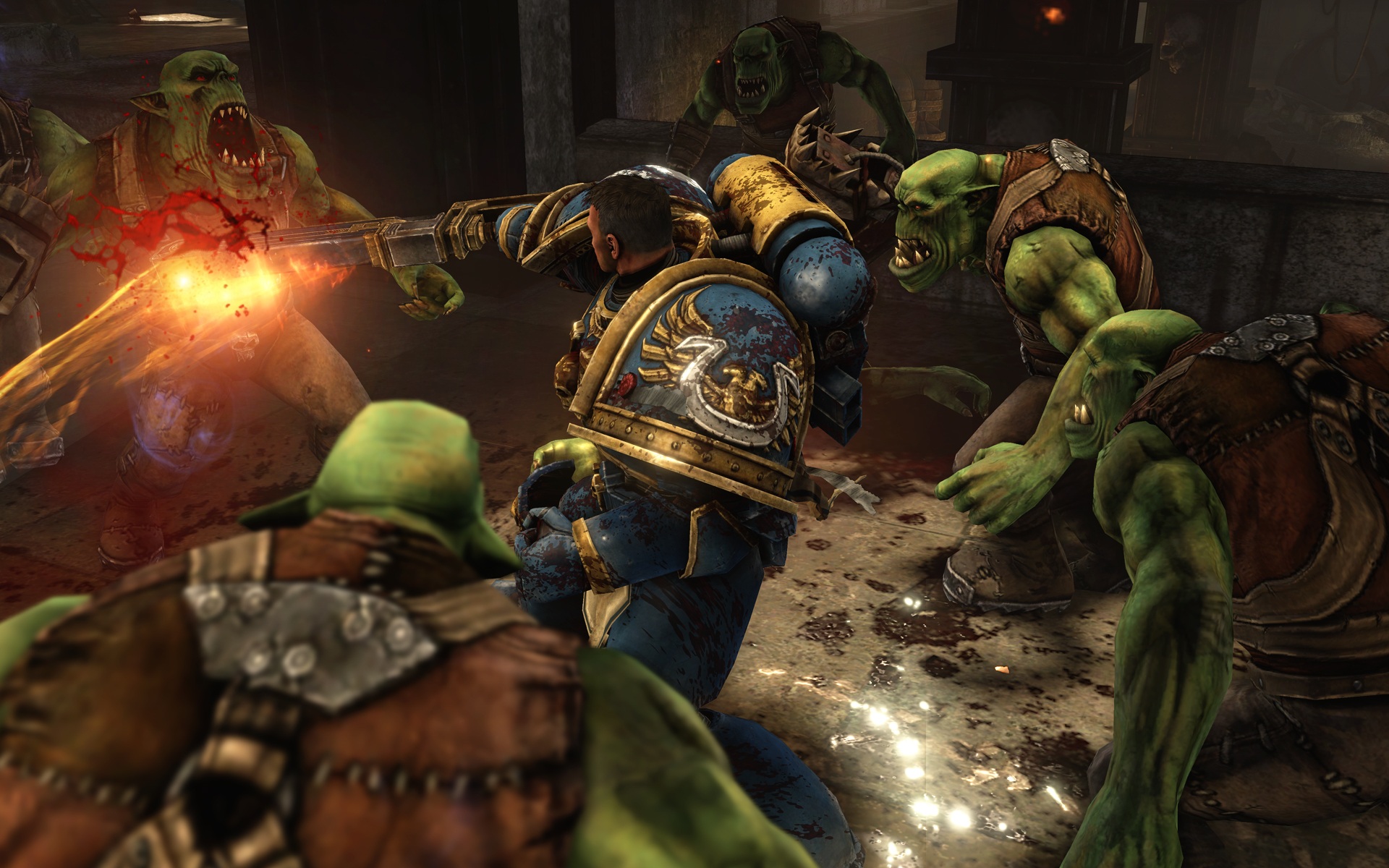
Review: Deus Ex Human Revolution
 Tuesday, August 30, 2011 at 2:35PM
Tuesday, August 30, 2011 at 2:35PM 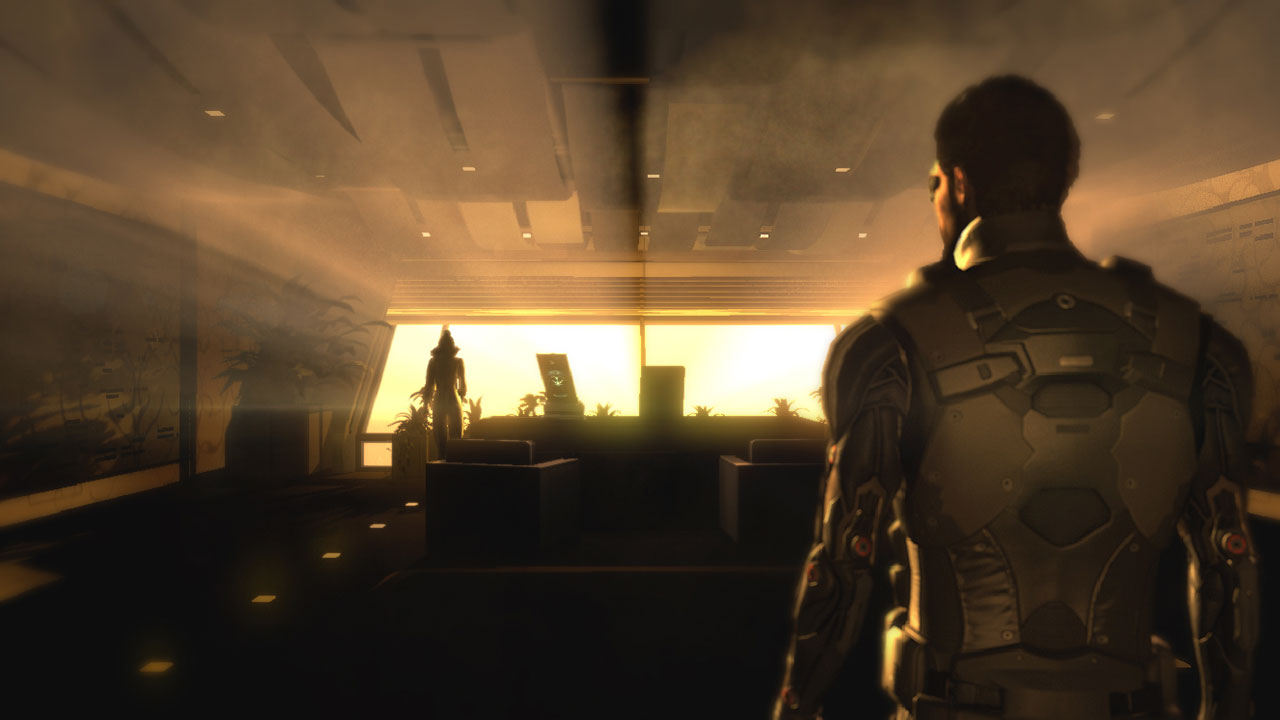
It is an oft-discussed topic in the gaming industry about games that redefine the interactive entertainment landscape as we know it. Every few years we get a game that makes us take a step back and shudder in awe. For gamers, it is the realization of a new way to play or perhaps the next step in modern storytelling. For developers, it’s the culmination of years of ambition and the willingness to push the boundaries of the play experience. It doesn’t happen very often but when the stars align and the right minds sit down to keyboard and mouse with an idea that hasn’t been tried before we get truly amazing titles like Red Dead Redemption, Halo, and Bioshock.
Warren Spector was one of those great minds and, with his team at Ion Storm here in Austin, he succeeded in creating several wonderful, innovative franchises, the most famous of which was Deus Ex. It was a sad thing to hear when Eidos announced they were closing Ion Storm in 2005 (Spector had left the company the previous year) and it was all but a certainty that this once great franchise was gone. When Eidos announced that they were going to bring the franchise back two years later it was a very worrying prospect. Spector had formed Junction Point Studios after leaving Ion Storm and at this point was already hard at work on what eventually would become 2010’s Epic Mickey so without him and his dedicated team behind the new project it was questionable whether Eidos could capture even a tenth of the wonder Ion Storm had put into the franchise. Eidos Montreal, a brand new studio was tasked with making the next iteration in the Deus Ex franchise. As their freshman effort this is no small task.
Now that Deus Ex’s prequel has finally arrived in stores one has to ask: is it really a Human Revolution or just a sputtering, stagnated glimpse at a once great series?
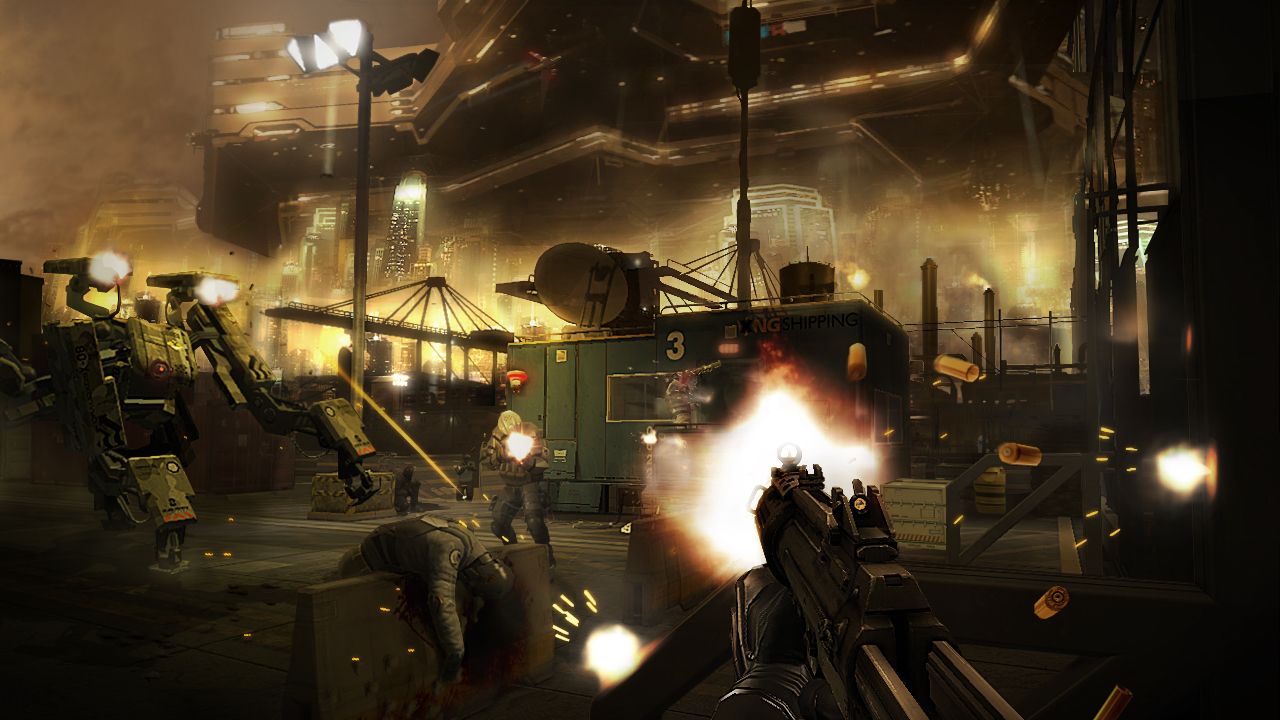
Laputan Machine and the Flatlander Woman
A quarter of a century before the events of Deus Ex and the rise of biomechanical augmentation, humanity is experiencing an event almost unparalleled in written history: the Cyber Renaissance. Like the rise of education and creativity Italy experienced in the 16th century so too are we seeing the beginning of the physical transcendence of man through mechanical augmentation. Casting off the bonds of flesh, both those who need it as well as those who don’t accept these unnatural enhancements in order to live better lives albeit at a great cost.
This is the great topic of debate in the year 2027 where we meet Adam Jensen, our protagonist. Adam is more than just involved in the debate: he’s smack dab in the middle of it. Jensen is the head of security at Sarif Industries, one of the leading companies in the field of human augmentation. One night, just prior to a trip to Washington D.C. to reveal a major breakthrough that would making augmentation safer and easier, Sarif Industries is attacked and most of the research team, including Megan Reed who is both the team lead and Jensen’s former lover, are killed in a raid by a group of unknown mercenaries. Jensen himself is mortally wounded in the attack and he is forced to undergo significant augmentations in order to save his life.
Six months later Jensen is called in despite still recovering by his boss David Sarif who needs his help once again. There’s been another attack, this one at a manufacturing plant where anti-augmentation radicals have seized the building and taken hostages. As Sarif’s right-hand man, Jensen infiltrates the facility only to discover there’s more here than meets the eye. From here Adam goes on a globetrotting adventure to find out the truth behind the conspiracy that may just shape humanity’s future.
The Deus Ex series was founded on the principle of telling a vast story whose events and outcome are shaped and almost completely determined by the player. While the developer had all the necessary source material to make a story set in that universe there are many things to worry about, none the least of which is that this prequel is supposed to lead up to the original game which is set a couple decades after this one. I can safely report however that, despite all the signs pointing the other way, Eidos Montreal has successfully created not just a great story, but a great Deus Ex game.
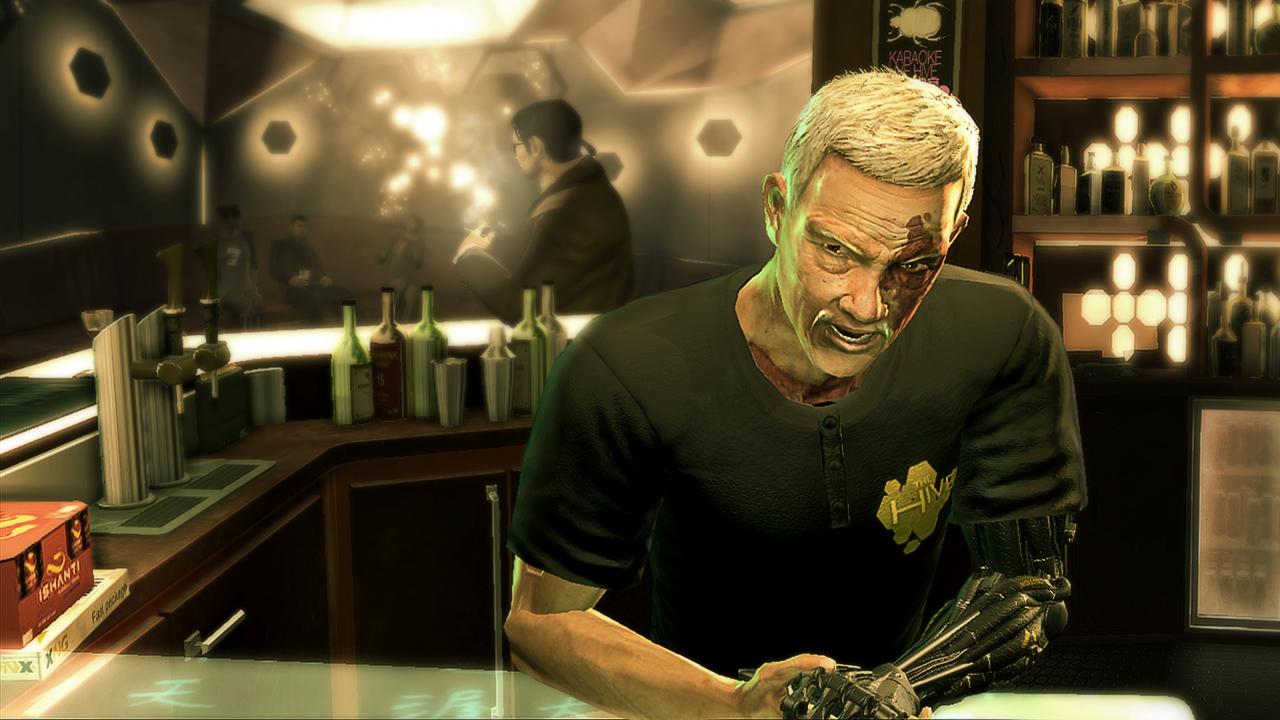
The intricate story necessary to make a Deus Ex caliber story are present and accounted for and you’d be hard pressed to find any sort of story point worthy of a complaint. Adam Jensen’s adventure ties in quite nicely into the overall narrative that is the Deus Ex universe and doesn’t compromise the events of the previous games at all. In fact, it can be said that the story in and of itself is perfectly placed as it both explains the origin of the nano augmentations seen in later on in the series as well as very well placing well known characters within the game like Bob Page, Elizabeth DuClare and Joseph Manderley without compromising them.
The world itself though is only half of what makes a Deus Ex story so great: it’s also your main character. Like JC and Alex Denton before him, Adam Jensen is a grey protagonist of intelligence, understanding, and cunning. What they also share is the fact that their ultimate actions are controlled by the player and each attitude the player chooses for Adam help both define your experience as well as how Jensen is perceived in the world. A character like this helps bridge the gap between a defined character you play as and the silent protagonist and this is something we need to see a lot more of. Characters like Adam Jensen and Booker DeWitt are the great balance of player choice and directional storytelling and we’ll hopefully be seeing more of that in the future.
The First Battle of the Invisible War
Like the two games before it, Deus Ex Human Revolution is a first-person shooter that just so happens to be a directed, open-world experience. At its core Human Revolution is philosophically the same as it was eight years ago, which is wonderful to see given the length of time fans of the series, including myself, have had to endure. It is here though where the similarities begin to fray.
Previously in the Deus Ex series there was a finite amount of stealth you had to adhere to. You were going to get killed fast if you weren’t careful but at the same time combat wasn’t exactly a high priority. After all, there were plenty of different ways to approach an objective and simply using strong observation skills you could infiltrate a location, attain your goal, and extract with little to no fuss. Human Revolution not only embraces this; it also takes it to the next level.
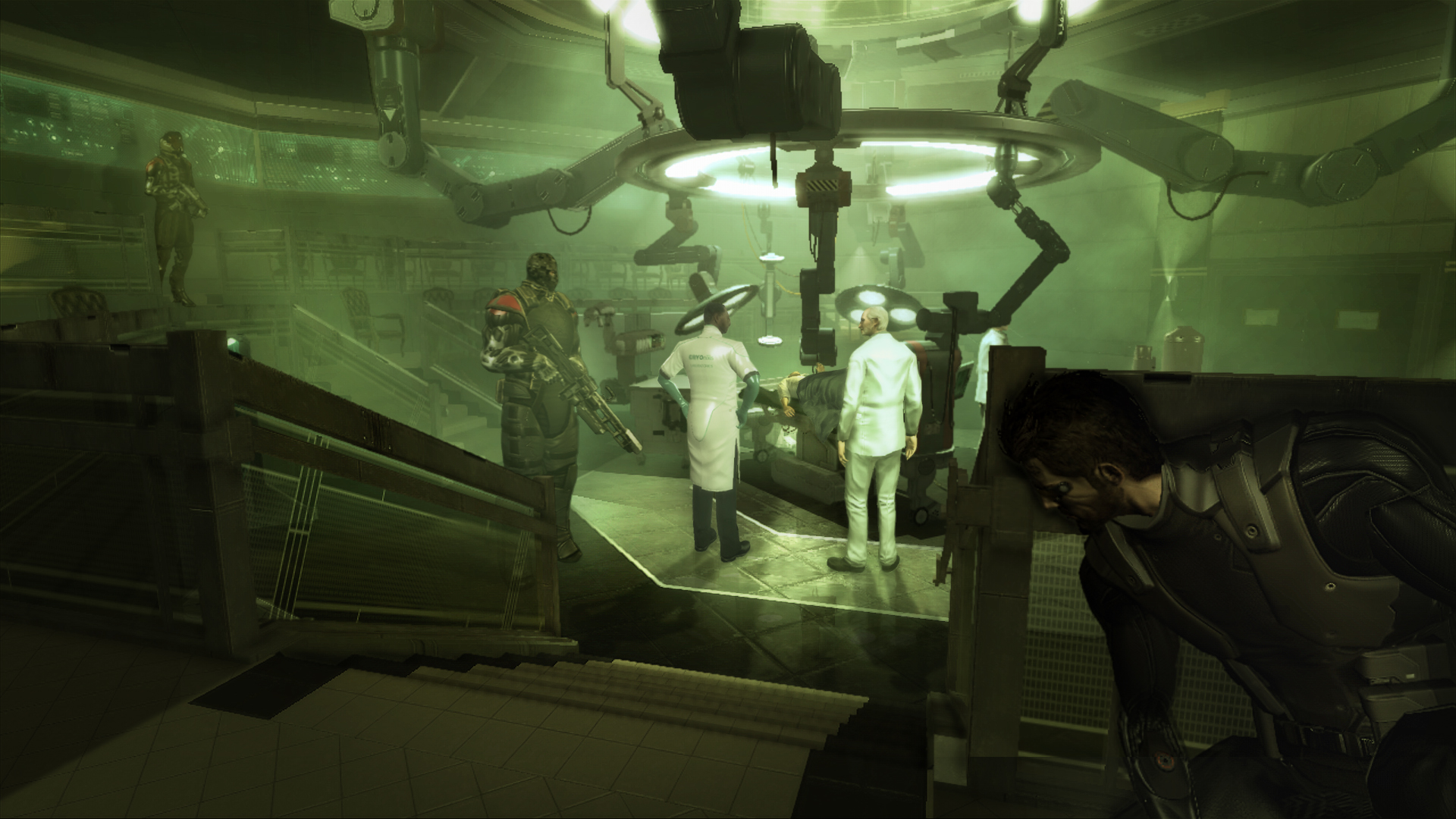
Human Revolution utilizes a stealth and detection system that, deliciously, pays remarkable tribute to classic stealth gaming ala Metal Gear Sold and its counterparts. Thanks to the addition of a “hold-to-hide” cover system much like that of what Tom Clancy’s Rainbow Six Vegas started, it is very easy to sneak through a restricted area undetected thanks to enemies whose senses are, again, much like that of a Metal Gear title. Enemies can see and hear you but, under the right conditions, you can easily avoid them. Moving from cover to cover is done with a simple press of a button though it can be a giveaway if done at the wrong time. Slip up and the enemy will certainly investigate and attack with extreme prejudice. The result is a gratifyingly enjoyable yet simple stealth system that is almost effortless to adapt to. Keep out of their line of sight and tread softly and you shouldn’t have any trouble. The game even encourages you to utilize stealth as much as possible thanks to an achievement that require no alarm activations as well as one that requires you not to kill anyone in the game. Play smart and these high value achievements can be yours.
Even if you find yourself suddenly in the middle of an unexpected firefight you are far from defenseless. Though the game isn’t built for shooting entirely like modern shooters Call of Duty or Battlefield, combat is achievable and plays much like most cover-based shooters seen today. You’ll pop into cover, peak out to fire, and pop back into cover as necessitated. While Deus Ex utilizes a regenerative health system it is made quite clear from the start that any prolonged exposure to incoming fire will result in death quite quickly. Thankfully ammo isn’t scare at all in Deus Ex if you are playing stealthily and even then you can scavenge the bodies of the unconscious or deceased in order to restock.
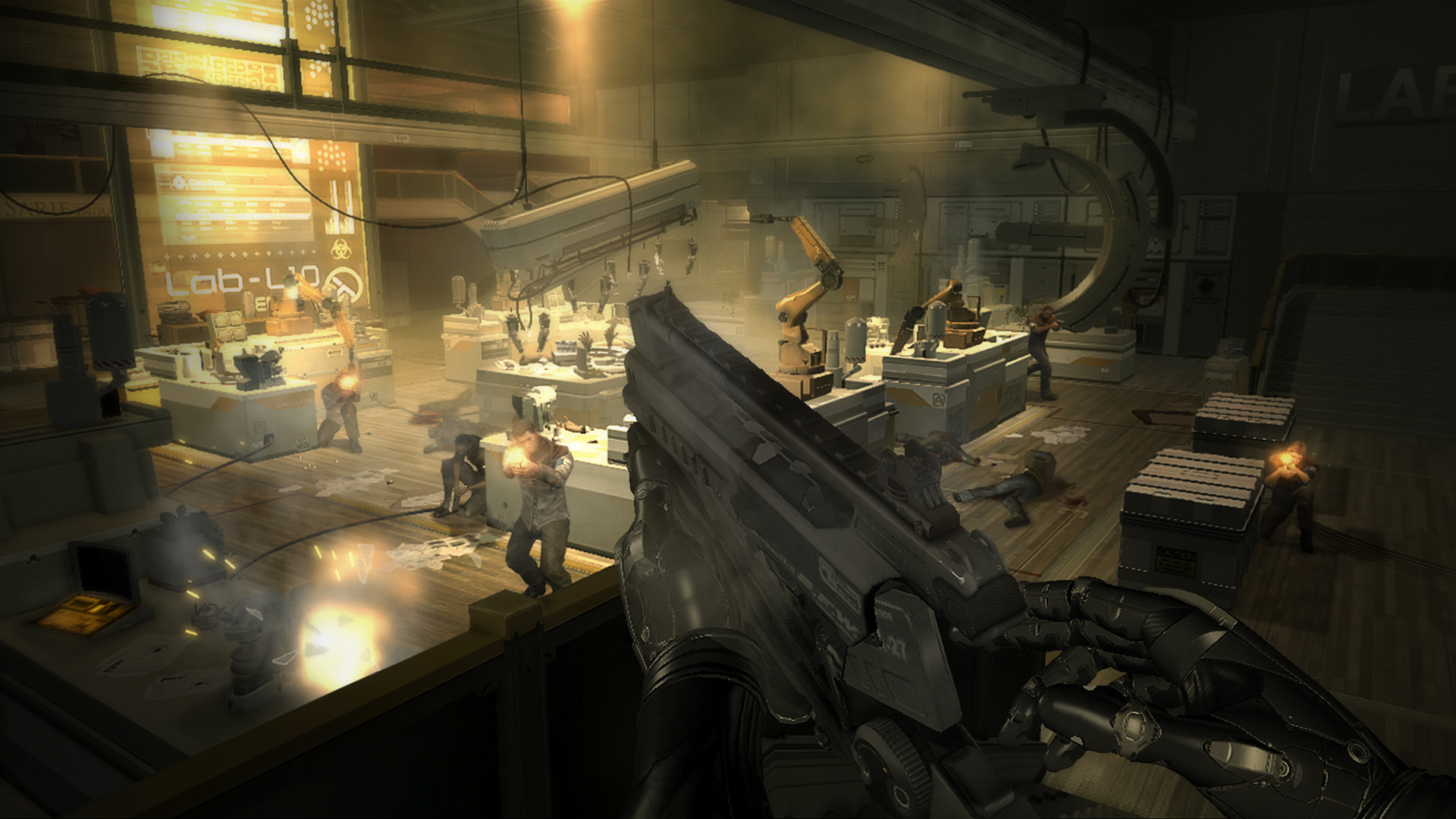
Enemy AI in Deus Ex, while not original, can be a formidable foe. Once detected, enemy guards are quick to take cover and trade shots with you and they are smart enough to flush you with grenades and charge you at the right time with the right weapon if you aren’t too careful. They all utilize the same weapons you do so, being careful and carrying the right tools for the job, one can easily turn the tide of a battle. Play smart and you’ll be smart but be too brash and you will be punished.
Overall, the game’s encouragement of stealth doesn’t dampen the already great combat. This is a thinking man’s shooter and if you are like me then you agree that this is an oasis in a desert of mindless shoot’em-ups.
Flesh Amongst Metal, Man Amongst Machine
Human Revolution greatest accomplishment, apart from the stellar story and delivery, is the world Adam Jensen resides in. Sticking to its guns, the latest title in the series retains the classic open-world exploration that separated the original titles from its corridor-based siblings. Between the mission stages you will arrive and return to two hubworlds: the American city of Detroit and the Chinese island of Heng Sha. Each is extraordinarily different with Heng Sha standing out in particular as it is literally two cities built on top of one another. As such there is a strong amount of verticality to be had in Heng Sha, something that games rarely deal with these days save for Bethesda’s upcoming sequel to Prey.
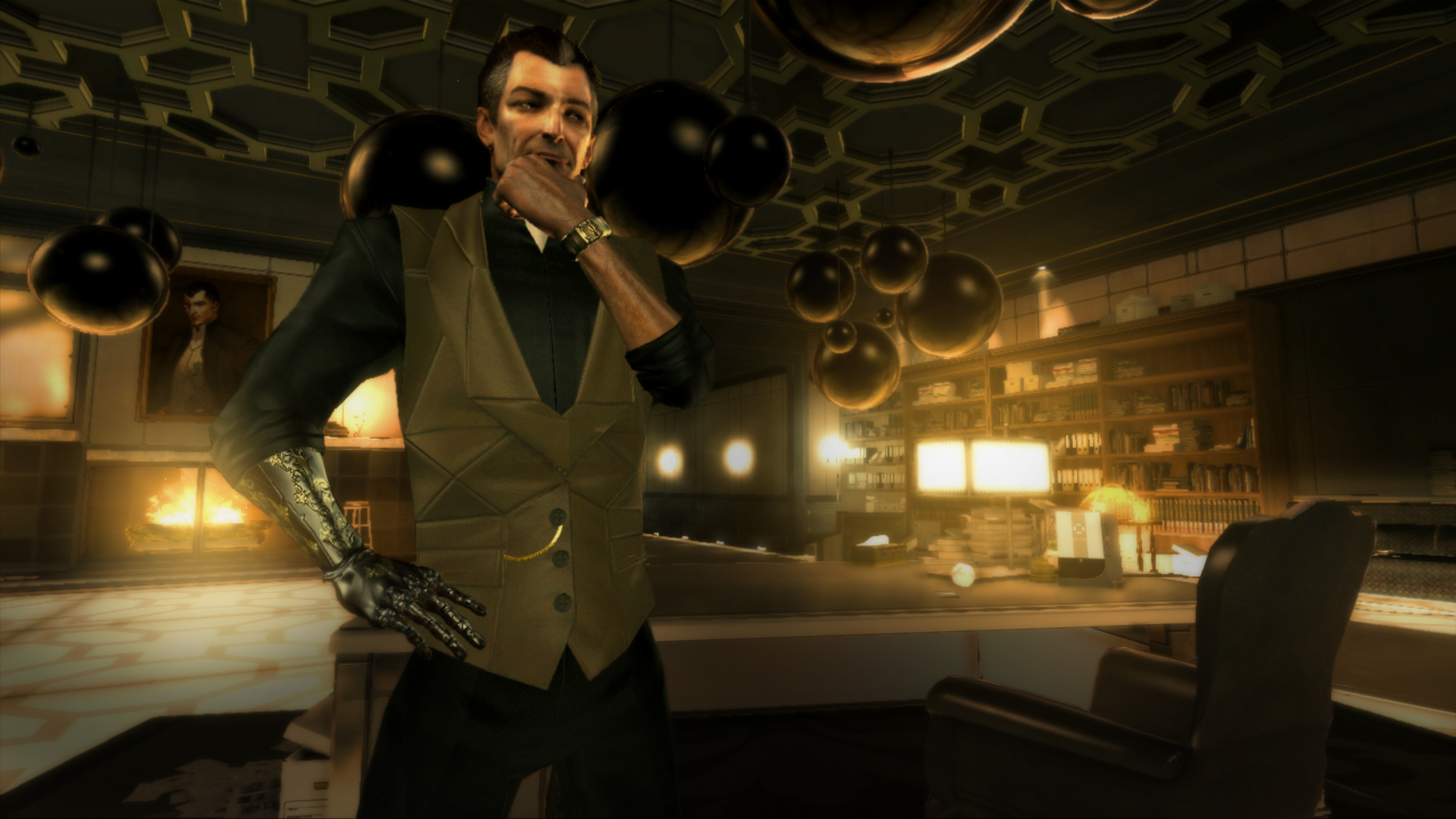
Customization is a large part of the Deus Ex experience as well and Eidos Montreal didn’t have to do much in order to get this right. In almost every way it is remarkably similar to what Ion Storm created over a decade ago in that your character can be customized to your liking. Favor a stealthier, less confrontational approach? Simply choose hacking, cloaking and enemy tracking augments and you’ll be good to go. On the other hand, augments like additional ballistic durability, the Typhoon system and refined recoil control can dramatically help in the event of a firefight. Others like the Icarus Landing System (ironic name huh?) aid quite well in helping the player explore and, for me at least, was a must in places like Heng Sha.
Another great feature worth mentioning is the game’s refined version of the series’ debates. Periodically throughout the game you’ll encounter main characters that you have to question or influence in order to proceed on. During these sequences there are always only two outcomes, either in your favor or not, but the dynamic between Jensen and his opponent can really dive into philosophical territory. The responses and questions you ask, as well as their tone, can heavily alter the direction of the conversation and each one is well worth playing several times just to see exactly what each person has to say.
Even the requisite hacking part of the game, which as it turns out is a rather large component in both exploring the environment as well as making your life easier, is enjoyable. While the previous titles were a simple matter of letting it automatically hack a target Eidos Montreal opted to flesh it out and make it into a minigame similar in scope to one used in Bioshock 1. In each instance you have to establish connections from node to node in order to reach the access hub, all the time being wary of the security system that may detect you. This factor is based on probability and while you can buy augments to decrease the likelihood of detection you’re almost always going to end up tripping the system somewhere along the line. Despite this it is surprisingly enjoyable thanks to a good level of strategy to be had each time you do it.
The only point at which I could find a viable complaint to be made was in regard to Jensen’s character. While I previously stated that a blended character like Jensen is a great medium by which to tell a story that is both shaped on its own as well as by the player it seems that Jensen is unfortunately a mostly understated guy in everyday conversation. Only during cutscenes and debates do you really feel Jensen step out of his comfort zone and actually be vocal. This is disappointing considering some of the normal conversations can be a bit heartbreaking or shocking so a little more character exploration, in these instances, would have been nicer. Other than that Elias Toufexis does a terrific job of making us appreciate Adam as character, a protagonist and as a savior.
With that seemingly the only detraction from the overall Human Revolution experience, you’d be hard pressed to find a more enjoyable experience this year.
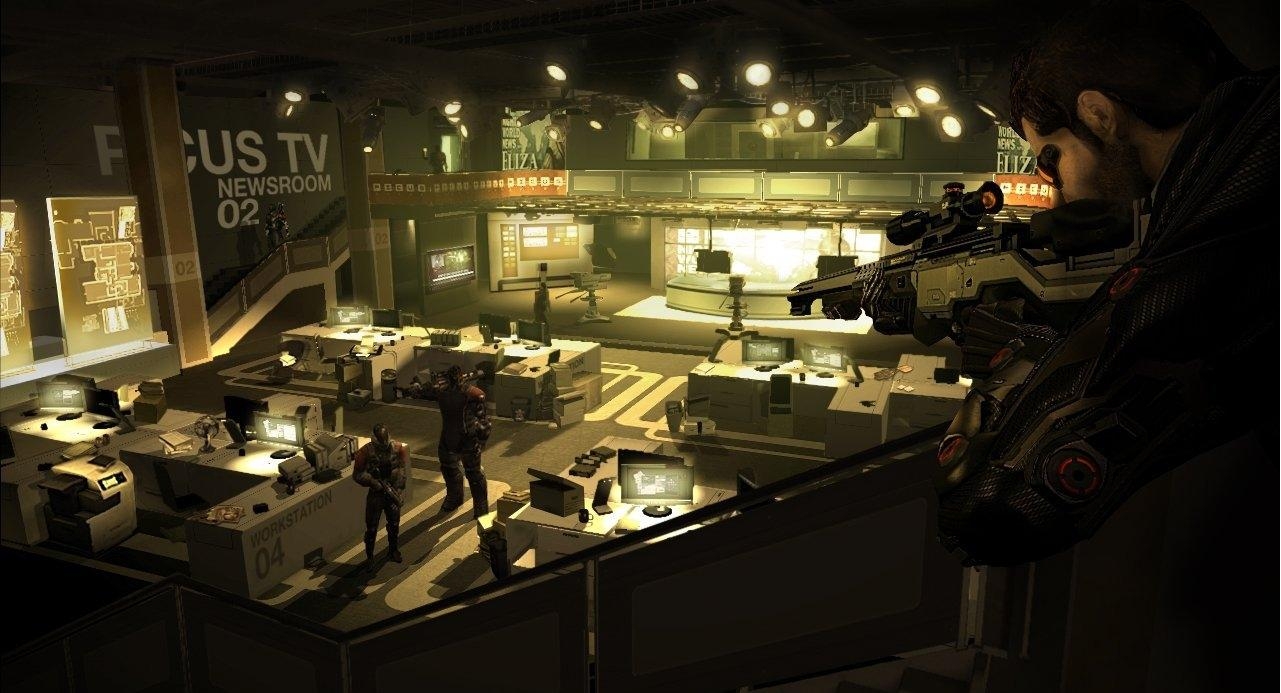
More Than Human, Less Than a God
Looking back at Deus Ex Human Revolution it is simply amazing how a new team like that at Eidos Montreal could create such a solid gaming experience. It had everything going against it what with SquareEnix’s lackluster reputation as of late, the absence of one of the greatest designers in gaming history, and a large and biased fanbase to impress. What we have today however is probably one of the most interesting and entertaining games not only of the year but of this generation. Ten years ago Deus Ex changed the way we play shooters, creating an experience that games like Bioshock owe their existence to. Human Revolution proudly continues this legacy, reinvigorating series fans while introducing new ones to one of the most beloved universes in the history of modern gaming.
Eidos Montreal, you have accomplished something that I didn’t think was possible. You guys put so much love into this game that, at times, I was simply speechless. If this isn’t game of the year material I simply don’t know what is.
Preview: Dishonored
 Monday, August 22, 2011 at 4:47PM
Monday, August 22, 2011 at 4:47PM 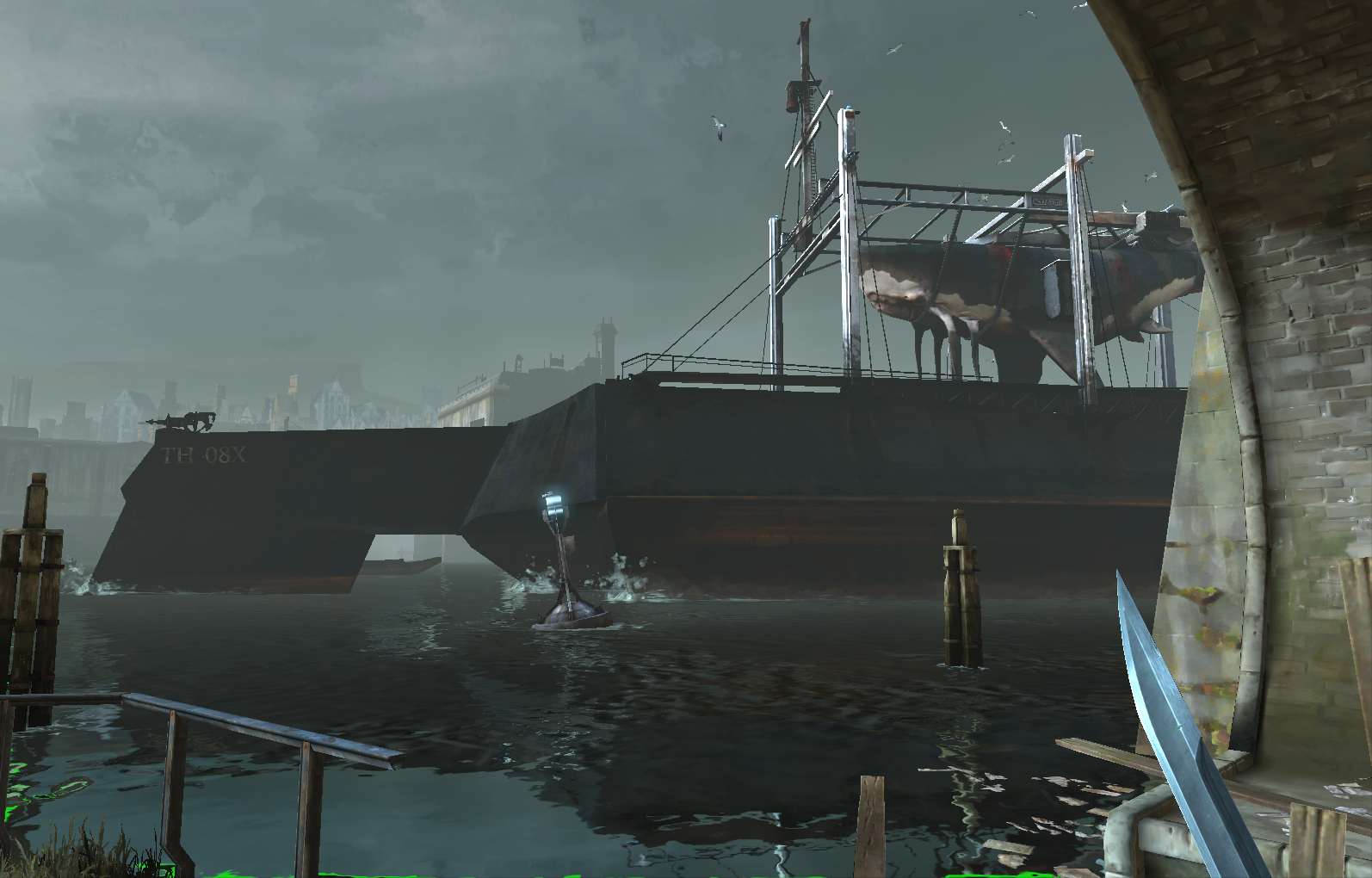
Stealth games are a genre that doesn’t get a lot of attention. After all, in a world where the most popular titles involve running and gunning through hordes of enemies there isn’t much call in the industry for the genre. For every six dozen action-oriented titles you may have one or two stealth games but even those are, usually, of the worthless sort. Every now and then though a great stealth game like Thief or a Metal Gear will come along and reignite the community’s passion before disappearing once again back into the ether. While at QuakeCon this year I had the privilege of getting to see Dishonored, Arkane Studios’ (Dark Messiah of Might and Magic) latest effort, and I can almost guarantee that this game garners such discussion.
Click to read the full articleAn Assassin’s Retribution
Sitting down in a private theater above the bustling hallways and lobbies of the Hilton Anitole in downtown Dallas my compatriots in writing and I sat down to a large projector with Harvey Smith, formerly of Ion Studios and the legendary Thief and Deus Ex series, and Raphael Colantonio, lead designer on Dark Messiah. Their presence alone demonstrated how important this game is to the studio but what is more important to note is the combination of talent therein. After all, how often do you get to see a team up of this caliber? Their collaboration as co-creative directors mean there is vast potential tied into their names alone.
Many games have laid claim to the statement that the world it is set in is “unlike any other.” When studios say that though it’s usually just a variation on a theme that involves orcs, elves, and an assortment of ugly, evil beasts. Dishonored’s world is perfectly fit for this description: an island-based whaling town set in a retro-futuristic industrial age. Steampunk this is clearly not.
Dishonored’s story takes place in Dunwall, a city in the middle of a series of islands known as the Isles. Most of humanity lives in the Isles far away from the Pandyssian continent where huge, dangerous beasts roam the land and from which few souls ever return. The entirty of Dishonored takes place in Dunwall though a clear mythology and world history is set up for expansion past this game should Arkane wish to build upon their new IP.
In describing Dunwall the closest approximation to a real-world equivalent would be Victorian-era England. The buildings and cobblestone roads share similarities but it is herein where the similarities end. Thanks to the immense talent of Viktor Antanov, the artist who seven years ago changed the landscape of the first person shooter genre with the alien-yet-familiar world of Half-Life 2, Dunwall lends alien architecture with Victorian streets to yield a city that dare the player to explore it.
Dunwall is in a state of decline thanks to a plague that has infected and killed off nearly half of the population. This seems to be one of the city’s lesser worries however as the government has recently been taken over in a coup. You play as Corvo, a legendary assassin and the bodyguard of The Emperess. At the start of Dishonored the coup occurs and Corvo fails to save the life of his mistress for which he is accused of murder. Sometime after his imprisonment Corvo escapes from his confines and, aided by the local resistance group, sets out to clear his name and will kill anyone who steps in his way.
Vengence, By Blade or Spell
As the lights dimmed and the demo began it was immediate apparent that Dishonored was quite different a game than most have played before. The demo is set in a sectioned-off part of the city where a corrupt lawyer is profiting from the suffering of the citizens of Dunwall. Your goal is to assassinate him but a secondary objective is to justify the kill with evidence of his wrongdoing. The lawyer is protected by the new government though so getting to him will not be an easy task.
Beginning in a sewer outlet, Corvo exits it into the harborfront where, before our eyes, a whaling ship bellows its horn as it parades into the harbor with its latest catch: a gigantic whale known as a Leviathan of the Deep. The sight alone of the ship and its dead cargo immediately separates Dishonored from most settings in games as it is one of the most alien sights to see in our world today but the reason why Dunwall prospers lies in the Leviathan itself. Imagine a world wherein crude oil and natural gas have never been discovered (or possibly even exists) and that the oils harvested from these Leviathans serves as the power source and the most prominent natural resource as humanity’s disposal. Everything is powered by it: lanterns, force fields, even machinery won’t function without it. The moral ambiguity of the resource is almost non-existent in the world of Dishonored and that alone is intriguing.
As Corvo walks along the steps of the harbor he pulls out a dagger, the demonstrator anticipating resistance. The city is currently under martial law and the streets are empty save for the roaming guards, the brave or brash troublemakers, and the dead. As Corvo ascends the steps voices can be heard. Corvo squats down quickly and peers over the last of the stairs to a ghastly sight: two guards are tossing the cloth-wrapped bodies of plague victims into the harbor while another stands watch. As the two continue on their duty the third walks away, beginning his patrol. Backing up, Corvo looks upward and spies an awning within reach. Jumping, he grabs the edge of the awning and pulls himself up.
Spotting the wandering guard, our demonstrator sneaks up from behind and delivers a killing blow with the dagger. Corvo searches the body before moving on as he is confident that he doesn’t have to hide the body since the other two are too busy with their appalling task. Corvo approaches a large force field that is just one of many elements of the game that are quite evocative of Half-Life 2. Going into a guard post right by it Corvo and disarms it.
Beyond the field a pack of rats are feasting on the remains of two unfortunate souls. Getting too close, the attack viciously before the player moves into the light from which they retreat. Rats serve both as an element of Dunwall as well as a tool at your disposal as was demonstrated later on.
Moving into an alley, Corvo hears the cries of a woman being mugged. The encounter is entirely optional but the player goes ahead and comes to her aid. It turns out to be a trap however as two more thieves vault over the fence behind them. Drawing his dagger, Corvo begins his first-person melee fight by parrying, blocking, and dodging the three’s attacks. Corvo takes a bit of damage but deals it back ten-fold, executing brutal killing moves against his enemies. The woman flees at the sight of the killings but the event may just return some profit, be it money or information, later on in the game.
What is interesting about the combat though is just how strong and fluid it is. First person melee combat isn’t something that has ever really been successful outside of a handful of titles and even then it has always felt clunky. Arkane clearly knows what they are doing though as Dark Messiah was one of the few games ever to actually get it right. The maneuvering of the character looks quite natural and the execution of attacks look to blend in just as well as combat in your typical third-person brawler like Enslaved.
Infiltrating the Mansion and the Grand Escape
Leaving the alleyway Corvo exits this area and arrives at the section where his target resides. In front of him a force-field that only allows guards through separates him from the courtyard where the lawyer’s mansion resides. The two-story building in front of him contains the power source for the field though so, watching the patrolling guards, Corvo sneaks in. Ascending the stairs Corvo is forced to kill two guards who protect the circuit breaker. The fight however draws the attention of the guards and raises the alarm. As the players waits behind the door though no one enters the room even after several tense seconds. Dishonored’s design is such that the world itself is very random in nature from encounter to encounter and the AI reflects this. The alarm wasn’t a scripted moment in this demonstration and neither was the absence of the reinforcements: just another example of how versatile an experience the game can be.
Finding the circuit breaker Corvo modifies it to kill enemies instead of him which the guards learn when a patrolling one is vaporized as he walks through it. Rather than risk taking to the streets where the enemy is littered the player opts to take to the rooftops. Looking out the window, Corvo spots a flat roof that would be perfect for maneuvering undetected. How he would get their though is another matter entirely.
Corvo isn’t just known in the world as skilled assassin based on combat abilities however: he also is one of the few who can use magic. Selecting the “Blink” spell from a circular menu, the player charges up the ability and targets the opposite roof before activating it. Blink gives Corvo the ability to teleport short distances and it easily allows him access to the roof. Spells are designed to be versatile from the start and can easily be integrated into combat or evasion to the player’s preference.
Moving along the rooftop Corvo looks down into the courtyard of the mansion. It is heavily occupied by several patrolling guards and a watchtower with a large machinegun attached to it. While a guns-ablazing approach is certainly an option in almost any circumstance the demonstrator instead opts to take a far more stealthy approach. Using a combination of Blink and double jumps, Corvo crosses the roofs and descends to the street, staying in the shadows. Moving from wall to wall and being careful to avoid patrolling enemies, Corvo comes across a grate on one wall of the mansion. It is here were Corvo demonstrates another one of his powers: Possession. Looking down Corvo spots a rat and activates the magic spell, completely taking over the mind and body of the rat. Possession isn’t a throwaway tool however as his physical form is tied directly into the body of his target so should the rat die so does he. Possession isn’t limited to rats though as Smith hints that other animals and even humans are a possibility.
Seeing through the tinted eyes of the rodent, Corvo steers the rat into the grate and through the winding paths of the air duct. Creeping past a maid and into the shadows Corvo returns to human form and briskly sneaks past the unsuspecting woman. Climbing a grand staircase the player stops at the top just out of sight of a guard who is admiring a bust of a statue. The guard has the key we need to access the lawyer’s office so, as he continues to stare at the stone carving, Corvo sneaks up behind and pickpockets it. The key isn’t necessary to complete the mission though it does make the approach a bit simpler.
Corvo moves on and eventually finds the door leading into the lawyer’s office. Before unlocking the door though the player peers through the keyhole and listens into the banter of the lawyer and the three guards. The discussion yields credence to the lawyer’s alleged corruption but without physical evidence the secondary objective cannot be completed. Ignoring this fact though Corvo bursts into the room where three waiting guards draw their pistols and fire at him. Corvo reacts quickly and activates another spell which stops time. Moving quickly, Corvo delivers several fatal blows to each guard before time returns to normal at which they all fall to the ground. Turning to the lawyer, the player executes the target.
Corvo has successfully killed the lawyer but his mission is only halfway through though: he needs to make it back to the sewer alive. Walking out onto the balcony, anarchy has taken over the courtyard. As the watchtower turns in his direction and prepares to send a swath of ammunition in his direction Corvo quickly uses Blink to position himself on the tower’s platform before jumping down to the street. Near the force field he is accosted by three guards for which Corvo doesn’t have time to fight. Instead, he activates yet another magic spell that summons a horde of rats. These rats swarm the guards and quickly eat them alive in a manner that’s not for the faint of heart, stripping the bodies of flesh and muscle. Corvo continues on, the modified force field preventing his pursuers from following him before exiting through the same gate he entered through.
Back in the previous section of the city Corvo arrives at the harborfront where a final challenge awaits. As he nears the guard post several citizens run in front of him from right to left, fleeing as they toss Molotov cocktails at an unknown enemy before being gunned down. Before our eyes come two bipedal walkers called Tall Boys lumber into view, the designs of which harkens Half-Life veterans back to that of the Combine Strider. The Tall Boys are manned by armored archers armed with explosive arrows, making them a formidable opponent. As the Tall Boys take note of him and begin their attack Corvo quickly freezes time once again and maneuvers out of their firing line and fires several bolts from his own crossbow. After several successful hits each go down but without the use of the stop time ability it is clear this is a far more difficult fight. Moving back down the harbor stairs our player returns to the sewer entrance where the demo ends.
Restoring Honor
Dishonored’s QuakeCon demo and the first opportunity for the press to actually see the game was both a thrilling experience while at the same time a quizzical one. Many questions are left unrequited and the game’s unique take on a morality system, Chaos, didn’t really leave us with any answers as to the consequences of your action (or inaction). What I was able to get out of Smith was that the game, at this point, does allow the player to do a pacifistic playthrough meaning that you can go without killing anyone which would certainly be quite the challenge. I was also told that this game adheres to classic stealth gameplay rules meaning there will be no social stealth aspects of the game ala Assassin’s Creed.
The most saddening fact I can admit to after having seen this very impressive demo is that, until that Friday morning, I had never had Arkane Studios on my radar. What with the major attention-grabbing developers and publishers out there in the world stealing the spotlight with hails of bullets and magical elves, Arkane simply never piqued my curiosity. Within the span of a twenty minute demo however I learned many things about Arkane, none the least of which was their clear dedication to making Dishonored well worth your hard-earned cash. This surprisingly unique title stands on its own and, come next year, may make you change your mind about how a first-person game should be played. We’ll have to wait and see if the game has the same impact when it releases next year but until then Corvo’s quest for revenge is definitely a title you should keep in mind for 2012.
E3 2011 Preview: Hitman Absolution
 Tuesday, July 26, 2011 at 4:41PM
Tuesday, July 26, 2011 at 4:41PM 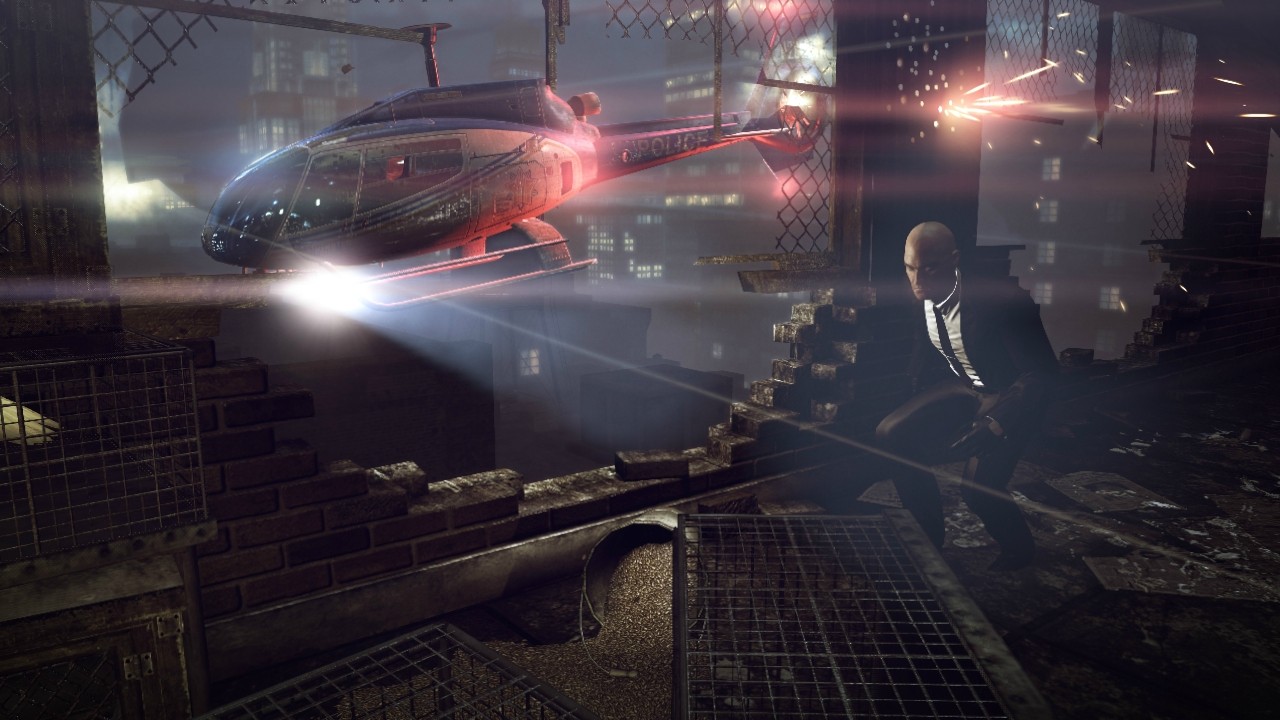
At the beginning of the last console generation a newly formed studio named IO Interactive created what would become one of the most interesting takes on the stealth action genre ever created: Hitman. With just its inaugural outing Hitman introduced us to a far more methodical approach than had ever been attempted in games like Metal Gear Solid or Tenchu before it. After four successful titles over the course of six years IO decided it was time to try something new and while their follow-up efforts with Kane and Lynch have certainly turned heads once again it hasn’t lived up to the legacy and grace that the adventures of the world’s greatest assassin experienced.
Five years since its last outing, a lot has changed in the industry and the fear that the influence of modern gaming aesthetics might adversely affect the game are well placed. Judging by the demo I was allowed to see at E3 this year however Hitman Absolution looks to be the comeback tour we’ve been wanting for so long.
Click to read the full articleCodename: 47
Agent 47, the darling of the International Contracts Agency, has seen and carried out just about any kind of assassination ever conceived of. From drug lords to murderers, from pedophiles to mob witnesses, no target is too difficult to get close to so long as the one who calls out the hit has both the cash and the right connections. 47’s lengthy career has had him traveling the globe in search of his next target from Russia to Columbia to even the White House but his riskiest assignment yet takes him to a place whose history for a century has been consumed by crime and corruption: Chicago.
After having taken care of his latest victim, 47 is on the run from the Chicago PD. Alone, outgunned, and without any of his trademark equipment to aid him in the evasion of his pursuers, 47 crashes through the window of a derelict with dozens of cops hot on his trail. It is here that our demo begins.
Hidden in the darkness from the men chasing him, the libraries’ rundown environment coupled with the raging storm outside makes for an ideal environment to play a game of cat and mouse. Huddling behind toppled bookshelves and dust-ridden desks, 47 makes notice of his only viable exit: the large open doors on the other side of the building. In between him and that exit though are over a dozen police officers whose loudmouth chief insists that they shoot first instead of asking questions.
Hitman Absolution’s gameplay in this particular instance is a dramatic departure from the games we have come to love over the years. While certain missions will retain the classic Hitman formula of a sandbox environment to explore and plan out your actions with, this occurrence is an example of what gamers can expect to be playing a majority of the time when the game sees its full release. Similar in approach to recent stealth titles like Splinter Cell Conviction and Batman Arkham Asylum, 47 has to play it cool without the element of social stealth to keep him safe. Staying out of sight is in his best interest and the darkness of the library is his new companion.
Patrolling guards roam amidst the bookcases, boxes, and desks that litter the area with their weapons drawn and a flashlight flickers in the direction of even the slightest hint of sound or movement. It is immediately clear that the game’s AI has received a massive overhaul over its previous incarnations, something that was much needed if IO wants to stay competitive in a genre that is slowly becoming increasingly more populated. The guards are clearly nervous as the lightning flashes and thunder roars through the dead lobby of the library and one wrong move could spell the premature end of 47.
As he wanders past a set of shelves 47 stops dead in his tracks. A flashlight is pointing towards where 47 was heading and the cone of light is becoming smaller by the second: a guard is approaching on the other side of the bookcase and 47 is sure to be spotted if he stays put. Backing up a bit, our demonstrator activates a new aspect of 47’s arsenal: Instinct, something that the world’s greatest assassin has honed over years of hunting targets.
Instinct is a game-changing aspect for the Hitman series as it serves as both a visual and audio aid to the player. Activating Instinct in this particular instance allows 47 to see the patrolling cop through the bookcase as well as a red line on the ground indicating his intended path of movement. Instinct can also be used to indicate interactive objects in the environment. It is clear that Instinct is a great tool to the player but the possibility of abuse seems to exist.
As the guard slowly passes by 47 he reaches up and grabs the guard from behind before squeezing the life out of him. Dropping the lifeless body to the floor, 47 presses on, moving toward the center of the room where a larger concentration of guards can be found. Hiding behind a desk the player finds a piece of extension cord and has it added to his inventory. Sneaking up behind another guard 47 quickly chokes the guard using the cord thankfully yielding a quiet death.
The lights in the room suddenly come on. Much to the insistence of the lieutenant in charge a couple of cops have found the fusebox and have restored power to the room. The additional lighting will make escape far more difficult so the player moves toward the box, staying in the shadows. As the two cops go around the corner 47 approaches the fusebox, rigs it, and turns out the lights. As the lights go out panic sweeps through the already spooked cops and one rushes back to fix it. When the guard tries to fix the panel it instead electrocutes him, both killing him and ensuring that the lights will not come on again.
Crossing the room, 47 nears another guard. This one stands next to a portion of the floor that has collapsed. Taking the opportunity, 47 pushes the guard to his death. Hearing the noise another guard, this one on the balcony above, comes to investigate. Moving quickly, 47 grabs the edge of the balcony and, just as the guard arrives, grabs him by the belt and pulls him over the banister causing him to meet the same end as his fallen counterpart. 47 pulls himself up and continues on narrowly avoiding another patrolling guard.
Silent No More
As 47 come around the corner the player takes notice of the exit. His salvation may be in sight but there’s a problem: a contingent of cops are huddled together near it and there’s no way 47 will be able to sneak past them without a fight. Grabbing a gun from a slain officer 47 slowly creeps behind an unsuspecting cop and take him hostage. As all hell breaks loose and the remaining police draw their guns at him our favorite assassin climbs the staircase slowly toward the door. At its threshold he knocks the hostage out and makes a run for it.
Climbing across several balconies with the heat right on his heels, 47 finds a fire door and breaks through it to the stormy Chicago rooftops. As he jumps to a nearby building a new obstacle appears: a patrol helicopter equipped with a spotlight and enough firepower to make short work of him. The player quickly steers further on, dodging the gunfire before making it to a maintenance room on another rooftop. The helicopter can’t peak in with its spotlight or get a clear shot at 47 so it stays put blocking the connecting rooftop along his escape route. Temporarily trapped, salvation arrives in the form of a patrol officer ordered over the helicopter’s loudspeaker to investigate the room. Waiting for the guard to get out of sight, 47 sneaks behind his target and knocks him out. Taking the opportunity to switch disguises, the player changes out of the familiar black suit and red tie into the cop’s uniform. Walking outside, the helicopter does nothing to stop him.
Entering the adjacent building 47 finds himself in an apartment filled to the brim with hippies and marijuana plants that looks like a stoner’s quintessential paradise. As one hippie tries unsuccessfully to flush his green bounty down the toilet others instead continue to do what stoners do best, some barely even acknowledging the in-disguise assassin let alone being able to acknowledge that a powerful storm is raging on outside their windows. Nearing the entrance to the apartment a patrol officer busts through the door searching for 47. The player grabs a lamp on a table and introduces it to the officer’s face, knocking him out quite brutally.
Exiting the apartment our demonstrator descents a flight of stairs and arrives in probably the worst place he could find himself in short of a morgue: a lobby filled to the brim with cops. Slowly walking by the officers, the player activates Instinct once again. As officers pass by and take notice of him 47 pretends to speak into his radio and pulls his cap down, obscuring his face. One cop in particular’s thoughts mistake him for another officer but 47 continues on. Nearing the door, the player has the camera squarely fixated on a cache of assault rifles and it seems like there’s about to be a huge firefight. As he reaches them though a contingent of SWAT officers rush through the door, startling everyone in attendance. Thinking quickly the player has 47 stop and instead grab a donut that was right next to the cache.
47 isn’t free just yet. About to leave as the SWAT team passes by, the cop who mistook him for someone else before calls out to 47, questioning him. 47 plays it cool and answers the man before walking out the door into the rain and a crowded train platform of several hundred pedestrians. As 47 disappears into the crowd the camera and music rise in an exciting bellow of horn instruments not unlike Inception’s soundtrack, marking the world famous assassin’s successful escape.
Curtain Down
IO Interactive has a lot to live up to with returning to the Hitman franchise after two mediocre games over the past several years but this latest iteration is looking nothing short of fantastic if the E3 demo we saw is any indication. It seems as if every complaint that has run through the series, from the questionable character animations to the gimpy AI, has been addressed and updated to modern standards. The gameplay modifications present in this single level may be a departure from the standard Hitman formula but what we get in the end seems to be a far more cinematic presentation that the series has long needed. If IO can keep this level of quality up then Agent 47’s next tour of duty will certainly be memorable.



The link, which can be read here, was a screenshot of a 4chan conversation from 2009 shortly after the launch of Modern Warfare 2. In it, an "Activision sales representative" asked the dangerous question of what the /v/ board thought about why Modern Warfare 2's PC version wasn't selling as well as its console brethren. Sure enough, the /v/ board responded in typically hilarious fashion, proclaiming that dinosaurs were the key selling point in their decisions to not purchase the game. The Twitter post itself was referencing EA's E3 2011 press conference wherein they demonstrated the infamous Thunder Run level whose intro depicted a soldier examining his child's dinosaur toy.
The resulting meme, of course, was short lived but offered a fine selection of Photoshop imagery, some of which I've included for your amusement below.
While these pictures easily entertained me and countless others it did sort of gnaw at me. Why exactly have dinosaurs gone, well, extinct in the eyes of every major development studio out there?
Defaulting On Dinos
To being with, let me define exactly what I mean by a dinosaur game. A dinosaur game should, most prominently, be a game about interacting with dinosaurs and not some educational BS title that has you doing point and click excavations of fossils in the scope of a grander mystery. It shouldn't be a game where you are raising them as pets and fitting them with clothing, nor is it a licensed title that uses them as a tool to pass along some kind of joke. No, I'm talking motherfucking DINOSAURS, the kinds of games that have you fighting for your life against creatures that outweigh you by a couple dozen tons and view you as a tasty afternoon snack best served raw. Dinosaurs, beasts that can't be tamed, don't care for social conduct and most certainly don't think that your Tuesday evening dinner plans are something to not interrupt. If you aren't running in fear or desperately emptying the last rounds of your magazine into them in a feeble attempt to put it down then we simply aren't speaking the same language and it is in your best interest that you click the back button now.
With that said, you're probably thinking to yourself "gee, when was the last time I really played a game with dinosaurs in it?" That's a good question my friend. In consideration of AA and AAA development studios and their release schedules over this past generation I think you'll be surprised at the number of games that have the prehistoric creatures in them: 5.
Yes, you read that right. Only 5 major AA/AAA titles fit this description and even then two of them don't necessarily come from known developers while another game, Telltale Games' Jurassic Park, isn't due for release until November. That leaves us with the 2005 Xbox 360 launch title King Kong and the 2008 Turok reboot. Only two major releases in six years from a plethora of several dozen high profile developers to choose from?
What the hell, gaming industry?
During the Playstation and Nintendo 64 console war that we all fondly remember we saw the pinnacle of the dinosaur game. With The Lost World we saw a renewed interest in the gaming genre with a whole slew of tie-ins none more famous than the controversial Trespasser which many gamers continue to play and mod to this day. The almost tactically-timed release of the Dino Crisis franchise (kudos to StrykeBlayde for his coincidentally-timed community article). I loved the DC franchise personally as it both captured the fear that was igniting Resident Evil fans at the time while giving the fan pretty much everything they could ask for from a survival-horror title with dinosaurs. Carnivores, a hunting simulator series for the PC, was wonderful as well as it had you chopping your way through jungles with the goal of adding a prehistoric trophy to your wall provided you don't in up in their stomachs.
It seems that the trouble began following the release of Jurassic Park 3 in 2001 which saw a slew of merchandising tie-in games for the Gameboy Advance and one title lightgun-based arcade title, all of which were, at best, mediocre. The 2003 title Jurassic Park Operation Genesis, a title that took the franchise at its most literal, came out to only modest reviews. The much anticipated Dino Crisis 3, a title that abandoned the Playstation and came to the Xbox, was a disaster of a title that still leaves many with a sour taste in their mouths. Despite this new generation nearly perfecting the design of 3D gaming and allowing players to travel to beautifully crafted worlds to explore, for dinosaurs at least, it seems to have been the beginning of the end, an ending heralded by a name that we can't help but recall with mixed feelings.
During the 8 and 16-bit generations dinosaurs were in what many can consider a renaissance as titles feature them were released regularly and done so in a variety of fashions. It wasn't until the 32-bit generation came along that we saw the greatest dinosaur franchise to come along: Turok. When Iguana Entertainment's Turok Dinosaur Hunter released in 1997 on the Nintendo 64 few could believe that this tale born from a less than popular comic book featuring a dimension-traveling Native American badass could be this good. Its sequel the following year, Seeds of Evil, is still widely cited as one of the most entertaining games of that generation thanks to its impressive graphics and arsenal of weapons, cementing the Cerebral Bore as one of the most beloved weapons even put in a video game. The series saw two more sequels, Rage Wars in 1999 and Shadows of Oblivion in 2000, both of which receiving positive reviews but it seems that, during that two year period, something changed. Perhaps it was their move to my hometown and their renaming to Acclaim Entertainment Austin. Maybe it was when then president Jeff Spangenberg left to found Retro Studios in 1998.
Killing the Dinosaur Hunter
Whatever the case was, it began with next-generation title Turok Evolution in 2002. While the jump to the Xbox was a highly anticipated one what gamers received that year was anything but what people expected of a Turok title. The storyline for the series had been in decline for some time but Evolution's story and singleplayer experience wasn't what people expected from a next-gen Turok title. After Evolution it seemed as if the once prominent franchise was dead as it wasn't until 2005 when we first got wind of the series making a comeback.
Turok, a title without subtitle, was released in 2008 by Propaganda Games. Just like the fact that Propaganda had little to nothing to do with Iguana Entertainment at all so too did Turok have anything to do with the titles released before it. A quintessential reboot of the franchise, Turok ditched the dimension-traveling, Native American badass with awesome weapons storyline in favor of a "more exciting" space marine one that has all the makings of BORING. Halo and countless others over that six year time span had pretty much covered every aspect of the space marine genre of shooters and Turok's tale of a man stranded on a dinosaur planet seeking revenge against his unit's leader that left him to die was neither original nor entertaining. While the brutality the series was known for was present in more ways than one the game's questionable AI, extremely linear level design and the lackluster of arsenal of more traditional weapons told the story of a game that had all but abandoned its origins in everything but name. This wasn't a Turok game nor should it have been. Any potential for a sequel that would do the franchise justice was gone after this title however as the Propaganda development team laid off 70 employees and was eventually shuttered this year after their RPG based on the Pirates of the Caribbean franchise was cancelled. Touchstone Games, the current owners of the Turok franchise, has not expressed any interest at all in reviving it.
The dinosaur hunter is dead. Long live Turok.
One Last Hope to Prevent Extinction
With the end of the Turok franchise it seems that there is no franchise or major developer willing to step up and make a game about you're childhood's favorite topic. The Carnivores franchise isn't what it used to be at all and the new Jurassic Park is nothing but a cavalcade of quick-time events with, if they wish to stay true to the canon, no chance at shooting up some velociraptors. Even Capcom, a major Japanese production house that has been milking the hell out of the Resident Evil franchise as of late, doesn't seem willing to man up and do anything their fans want these days, meaning we'll probably get no resolution to what happened at the end of Dino Crisis 2. Are dinosaur games going the way of the World War II shooter?
Not necessarily my friends. While dinosaurs may never see a prominent return to the games we loved there is still hope in the most unlikely of places: the indie gaming scene. For your consideration I've compiled three projects from indie developers that may just be our ticket to reigniting the gaming community's passion for games with giant lizards. Let's take a look.
First up we have Dino D-Day, a title from indie devs 800 North LLC and Digital Ranch. This title was originally conceived as a total conversion mod for the Source engine before the team decided to release it on its own this past April. A multiplayer-based game, Dino D-Day's ludicrous plot is just as awesome as it sounds. Rather than storming the lands of Europe in his initial blitzkrieg Adolf Hitler instead was able to do with the most feared arsenal in the history of man: resurrected dinosaurs. As an Allied player you play as one of six human classes while the Nazis get either three human or three dinosaur choices to choose from including a Raptor, a Dilophosaur or a Desmatosuchus with a 20mm cannon strapped to its back. Yea, you read that right.
The game's development team sounds quite passionate right now so if you're in the mood to do some dino-killing right now head on over to Steam and pick it up for $10. Not convinced? Check out their recent T-rex update that adds the king of the dinosaurs to the game with the Nazi addition of twin MG-42 machine guns mounted on either side of its head.
Next up we have Orion Prelude.
Much like Dino D-Day, Orion Prelude comes from humble beginnings as a mod for the Source engine that took on a life of its own as an Unreal 3 title. This new indie development team, Spiral Game Studios, has been getting a lot of press this year thanks to several partnerships as well as a successful Kickstarter campaign that was held back in February. Orion looks to include single, co-op and multplayer modes with eight vehicles total, a class that includes a jetpack, and playable dinosaurs with optional AI for them. Orion's team seems to have quite a love for this project as they've already established a long background narrative that sets the stage for the game. Looking at the gameplay the best way to describe it is that it is Tribes with dinosaurs. Go ahead, soak that statement up a little bit. Ready? Let's continue.
Orion Prelude is the first in a planned series of titles set to release (hopefully) this year on Steam, Xbox Live Arcade, and PSN. Here's the latest footage of the game straight from Gamescom and Pax Prime 2011.
One final entry for your consideration is Primal Carnage and before you ask, no, it has nothing to do with that rather fantastic fighting game of a similar name.
Coming to us from the international team of Luke Warm Media, Primal Carnage is much like the other two titles listed above as it is a multiplayer-focused affair of dinos versus humans. What the other two games don't have however is looks as, of the three, Primal Carnage is goddamn beautiful. From just one look at the game it looks like Crysis with, well, you know. Each side has five classes of varying strengths and weaknesses with the possibility of DLC expansions that include the Spinosaurus as was demonstrated in a tech demo. Of the three though it is also the least well known as Luke Warm has yet to announce gameplay modes or a release date. Either way though Primal Carnage looks fantastic and should be well worth the price when it finally drops on Steam and, hopefully, consoles.
Meanest Six Foot Turkey You Ever Saw
Dinosaurs and video games were once inseparable but sometime within the past decade it seems like the industry decided that modern war games, zombies and high fantasy was far more important an endeavor which is a shame considering the bountiful amount of talent to be had across thousands upon thousands of creative minds. This "Dino Dustbowl" we've been forced to endure is not only frustrating, its down right cruel. As gamers, we deserve the chance to bring shotgun to velociraptor, rocket launcher to Tyrannosaurus Rex, steel-toed boot to Compsognathus!
Go out gamers! Write your congressman and tell them that we need more dinosaurs in video games! Stage protests in front of Valve's headquarters demanding an Allosaurus tear apart a Strider in Half Life 2 Episode Three! Demand compensation from EA for not including the Tyrannosaurus Warfare Pack in the DLC for Battlefield 3! Fight, FIGHT FOR YOUR RIGHTS!
Or at least check out Dino D-Day, Orion Prelude and Primal Carnage. They look great and are probably the only games we have a chance of shooting giant lizards in anytime soon.